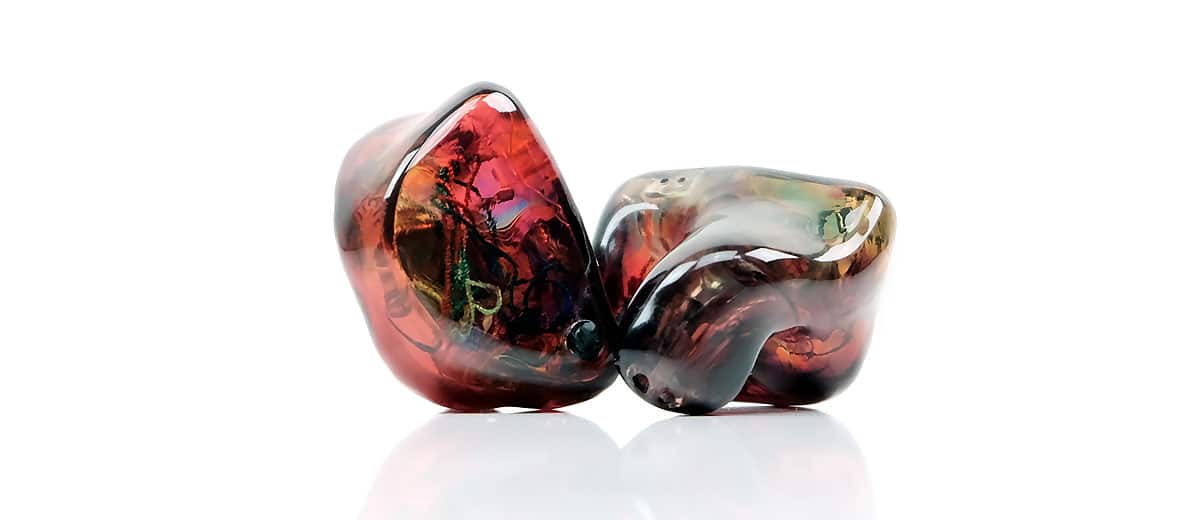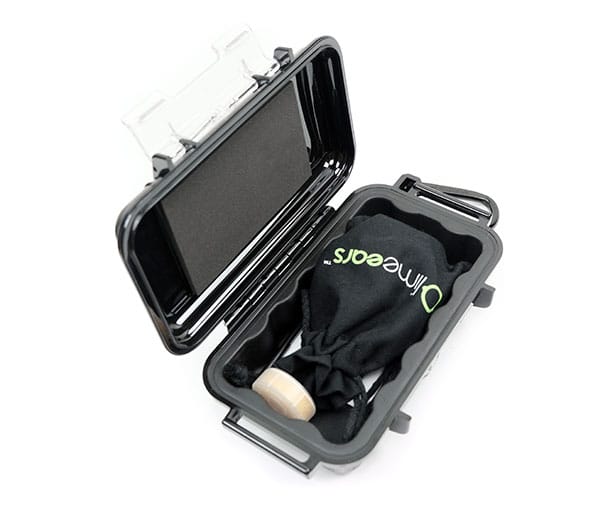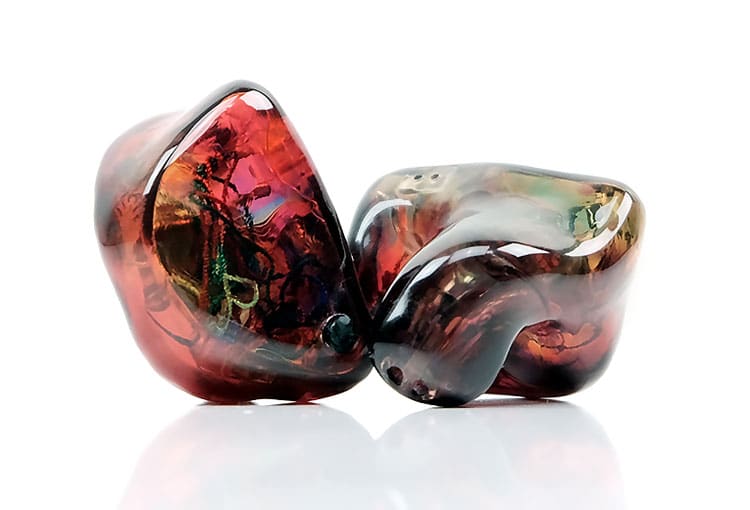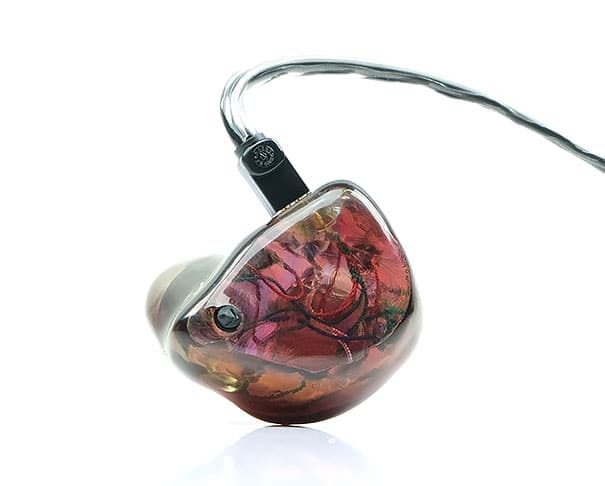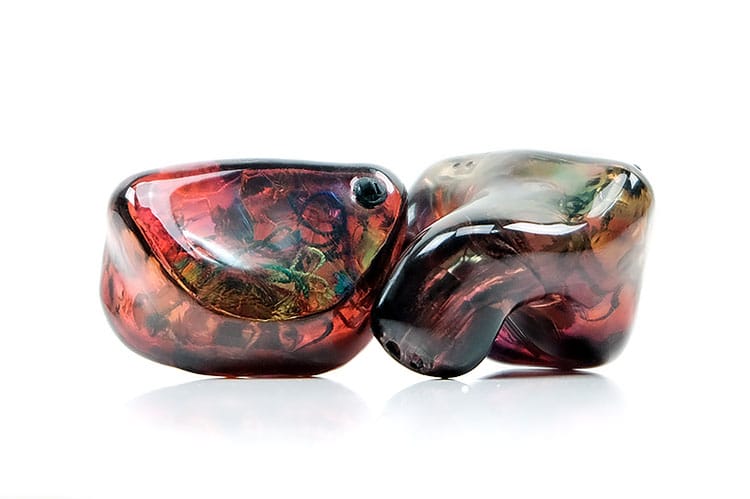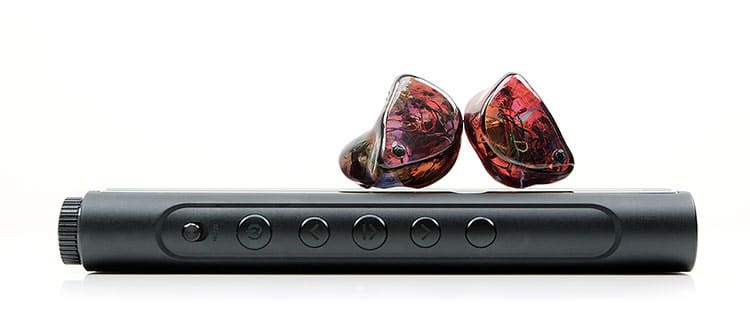The Lime ears psi is a triple balanced armature custom monitor with a custom enhanced bass switch for two unique sound signatures. The retail price starts at €625.00.
Disclaimer: The Lime Ears psi sent to us is a custom sample in exchange for our honest opinion. We thank the team at Lime Ears for giving us this opportunity.
To read more about Lime Ears products reviewed on Headfonics click here.
Lime Ears ‘new’ psi just arrived and I have used inverted commas because it has coincided with the end of the line for their older models the LE3 and the LE3B as well as their switch-hitting LE3SW.
Now, from what I can tell the psi takes over from these 3 previous models though quite how similar it is to those older versions I am not sure since I have never tested them before. This could well be a rebranding and tidy up exercise but from our perspective, it is our first time hearing and reviewing the psi or the ψ.
The price of €625.00 does make the psi affordable though it is not the cheapest triple balanced armature custom we have tested to date. The Avara AV3 triple BA custom at $310 is half the price and a heck of a performer. What will be more interesting is the contrast to Custom Art’s competing triple driver custom, the FIBAE 3 starting from €525.00.
Tech Inside
The Lime Ears psi is a triple balanced armature driver custom monitor with a 3-way passive crossover design with each driver grouped on its own. That means one for the lows, one for the highs and one for the mids using a two-bore acoustical design.
The rating is 46Ω impedance and 109dB SPL so a middling efficiency monitor and should not be affected too much by impedance skew and high noise floors (see page 2 for our tests).
What is unique about the psi is its use of a bass switch much like its bigger siblings, the Project X four balanced armature custom and the 6 BA Aether R flagship. This initial switching process was available on the previous LE3SW and allowed Lime Ears to merge their two cheaper monitors, the LE3 and LE3B into one design.
The new switch is based on the company’s current Fletcher-Munson principle. This means that the adjustment is not just focusing on an enhanced bass response but also some tweaks further up into the mids for an elevated vocal presence. This helps to balance out the stronger low-end and prevent the mids from sounding veiled.
Unboxing
The Lime Ears psi arrived in a super large branded black cardboard box. I do not know if that is standard now or just for this review sample but it is akin to a headphone box size.
This must cost a small fortune in logistics because inside you will find the normal accessories and contents I tend to expect from any Lime Ears monitor. After emptying it, the large courier box is entirely disposable.
Accessories
Those contents inside include a branded Pelican 1010 weather-sealed carry case with an attached carabiner which, traditionally, I have always like for their durability and space inside to carry just about anything within reason. You can find a few monitors in this case with some additional cables with room to spare.
One thing that seems to have changed is the use of small drawstring black branded cloth pouch to protect the CIEMs when in transportation. You can also use it to reduce the size of your carry case from the large Pelican 1010 to a pocketable bag. Not much protection from damage but a lot smaller. It is a nice touch and entirely reusable.
Aside from that, you get a cleaning brush, silica drying pack, and your warranty and marketing collateral. Overall, a traditional offering but an entirely functional line-up that should last a long time.
Lime Ears psi Design
Ever year Lime Ears up their game when it comes to quality custom designs. Last year we tried their Scarabeus speckled reflective green and blue on the Aether R and this year it is the complex Cosmic Swirl on the psi.
You can find the Cosmic Swirl option under the Premium design option on their design tool online and costs an additional €40 which is not that expensive of an option. The finishing on these are perfect by the way with no bubbles or blips to be seen anywhere. The only break in the flow of the visual are the small switches at the bottom of the faceplate that control the bass performance.
This design is a foundation of translucent reds and pinks with a studied splash of orange, yellow, green and blue. I am presuming the way everything comes together that each swirl design is entirely unique also.
I thought the overall effect came out rather well on initial impressions and does add some beautiful reflective visuals on the internal wiring and drivers which are fairly easy to make out given the shell is translucent.
Stock Cable
Given the price point, I am not surprised the psi comes packed with a Plastics One detachable 1m 4-wire copper cable. ‘It will do for now’ is the phrase I tend to use for these cables and there are better aftermarket versions on the market for less than $100 that will give a lift to the performance of the psi such as Effect Audio’s Maestro or just above $100 with PW Audio’s No 10.
Not that the Plastics One variant cable is without any benefit. They always retain a wonderfully light and easy memory-free handling quality to them. The strain relief is excellent, the pin diameters are usually consistent and easy to insert and they tend to be microphonic free. There is no exception to that description with the psi version either so those are the pluses.
The negatives are usually in terms of higher than normal resistance leading to a lack of dynamic range and absolute clarity across the FR. I will let you know how much better they can be in the main review.
In The Ear
Oh blimey, the isolation on these are top-notch. Being an all balanced armature design there is no venting required so zero holds in the shell for noise to leak in or out. That means noise attenuation right across the board. ‘Air cons go mute’ is the phrase I would like to coin for how well these block out noise.
Of course, how good they are for a fitting depends on the quality of the ear impressions you send to Lime Ears as they do not handle digital STL files. In my case I have been using an old one they have on file for me for a few years but my ears still seem to be the same size and shape as the comfort levels are excellent.
Lime Ears psi Initial Sound Impressions
(Initial testing is done with a FiiO M15 and a Lotoo PAW Gold Touch using the stock cable).
The Lime Ears psi has two tunings. The first is a reasonably neutral to slightly warm bass switch off with a midrange and a treble lift around 1-3k and 5-6k. The second, with the bass switch, turned on, is an emphasized sub-to-mid bass emphasis by 5-6dB that introduces a lot more power, PRaT, and mid-bass punch.
The bass on is the warmer or fleshier of the two sound signatures. Vocals are a little further forward with more body whereas they sound leaner on the switch off position and in a more neutral staging position.
You get less bass penetration and power with the switch off but it is not lean to the point of non-existent. There is a slight lift in the mid-bass to deliver some warmth to the psi timbre but otherwise, you get more mids and treble focus in its tuning.
Timbre is wetter and richer with the bass switch on whereas its cleaner and brighter with the switch off. Percussion has more presence with the switch off and instrumental separation is enhanced. Imaging cues should also be a bit easier to pick out with the bass switch turned off.
Preferences
If you are straight up asking me for a preference between the two switches then I might go for bass activated at this stage. The switch turned off is more neutral and if you want a cleaner sound signature this is the way to go but I like the power the bass activation brings to the signature.
I am presuming that these switch work on a resistance basis to allow them to contour how much ‘loudness’ creeps in and the effect is quite similar to the Project X and a bit more dramatic than the more refined Aether R bass switch.
Stay Tuned!
The Lime Ears psi sounds like a competitive 3 driver custom monitor. Certainly, as far as the design and overall build quality goes there is no question the Lime Ears psi is excellent. The Cosmic Swirl design is both eye-catching and intricate.
The 2 signatures are different and that is a good thing. At this stage, I am veering to the bass on because I like the enhanced low-end power and smoother timbre it offers but there is a case to be had for the more neutral cleaner sound when turned off. I guess that is the selling point of the Lime Ears psi, that switchable sound signature, much like the Project X and the Aether R.
I am betting though a solid aftermarket cable will really open up the performance of this monitor so stay tuned for our full review out soon!
Lime Ears psi Technical Specifications
- 3 precision balanced armature drivers
- 3-way passive crossover design
- Sensitivity: 109 dB/mW
- Impedance: 46 Ohm (@1000Hz)

